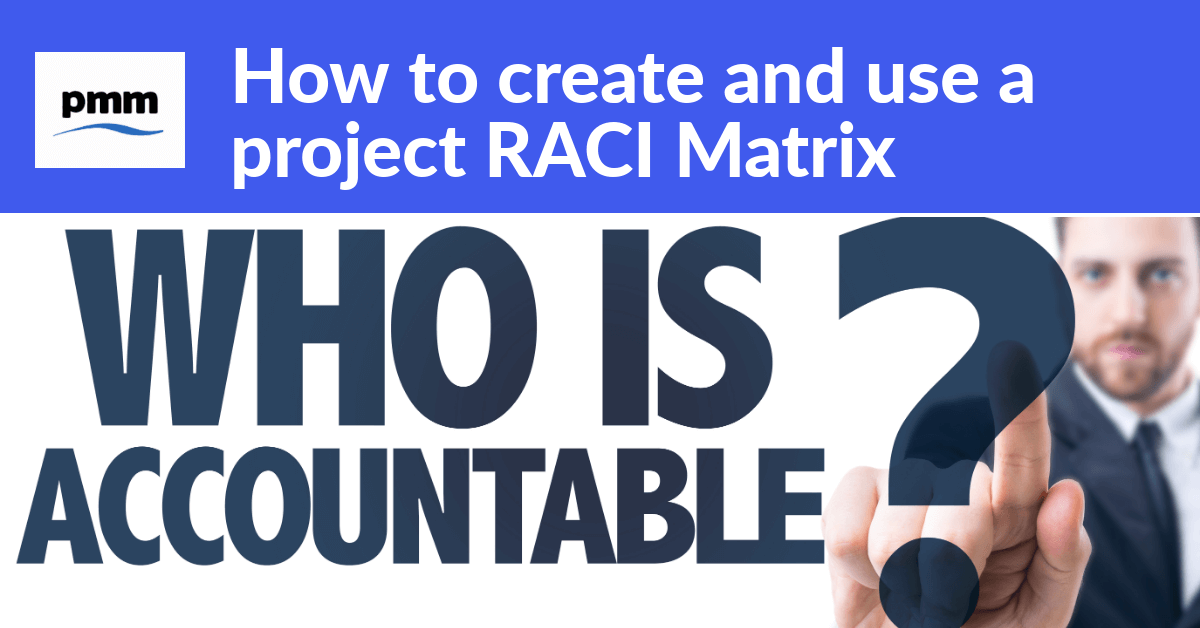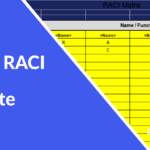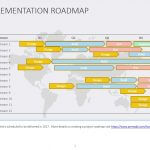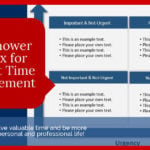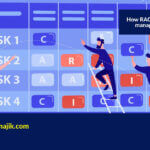Project teams are often formed by people from various parts of an organization, from outside organizations and customers. Although the project manager has responsibility for the project delivery and leading the project team, they likely are not the manager or supervisor of the team members. This can make dealing with people issues, such as; time-off, conflicting priorities, behavioral issues and other issues that come up when you manage people.
A RACI Matrix can help you as the project lead to clearly define who is responsible for different aspects of the project and provide the team and their associated organizations a better understanding of their roles.
Using a RACI matrix will help you to:
- Set clear expectations about how the project will be managed, along with each individual’s role and responsibility.
- Provide timely updates to the right people.
- Improve decision making, by identifying who really needs to be involved in decisions.
- Ensure tasks are evenly distributed among the team and delegated to the appropriate resources.
What is a RACI Matrix?
A RACI Matrix identifies the roles and responsibilities for each project task or decision. For a large project, this activity can be challenging and time consuming. But remember, it is always good to get these issues out on the table early on before a real problem arises. The resulting discussions and debates over roles and responsibilities can take time to resolve, but they will be easier to resolve in an abstract context, than when you are in the middle of a project crisis.
What does the RACI acronym stand for?
Responsible, Accountable, Consulted, Informed; each letter in the acronym represents the level of responsibility.
Responsible: The person who does the work to complete the task. Every task needs at least one “Responsible” party. You may have more and that’s okay.
Accountable: The person that delegates the work and is the one to determine when the work is complete. They have responsibly for quality and timeliness, along with ensuring the “Responsible” party has what they need to complete the task. In many cases, the “Responsible” individual is also “Accountable” for the task.
**IMPORTANT: Only one person should be accountable for a task.
Consulted: This is generally subject matter experts, they are individuals who are contacted to provide advice before, during, and sometimes after a task is completed. They do not work on the task directly.
**The more individuals or groups that are “Consulted”, the longer it will take to complete a task.
Informed: These team members simply need to be kept in the loop on the task progress. In many cases, being “Informed” may only happen when a task is completed. However, they might be informed if there is a hold-up or if the details of the task have changed. In some instances, completing one task starts the next task. The person “Responsible” for that task also needs to be “Informed”.
A RACI Matrix helps set clear expectation about project roles and responsibilities. As a project manager you might find that you are often be placed in the “Accountable” role, but be careful if our placed in the “Responsible” role. As the project manager, you are not doing the work, you are managing the work.
A RACI Matrix also encourages team members to take responsibility for their work and allows for consultation with others as needed. The “Consulted” role puts this person that role formally allowing your team to reach out to them without judgment and politics
Creating a RACI Matrix
1. List the Decisions and Tasks to Include in the Chart
To start the RACI Matrix, you will need to have completed the Work Breakdown Structure (WBS) which will provide you with a comprehensive list of tasks for the project or a phase of the project. You will need a list of all the tasks for the project and the decisions that need to be made during the project. On your RACI Matrix, this list will be placed in the first column on the left of your matrix.
2. Identify your Project Team Members
Next, list all of the people involved with the project. If you do not have names you can list the role. Careful using organization or group names, as it is difficult for a group to be “Responsible” or “Accountable”, these should always be an individual, in the case of a group or department, select the department head, or consult the them on who should have these roles. It is not uncommon to see a group listed as “Consulted” or “Informed” – but be leery of multiples in the “Accountable” role.
These names will be listed across the top of matrix columns starting at the second column. With the tasks down the first column and the names or roles listed across the remaining columns, you now have a Matrix!
3. Identify the Roles
This activity can be done first by the project manager or a small group, or you can get the lager project team together to complete the task together.
Start by identifying the person or persons “Responsible” for each task, by placing an “R” in the box for their name and the task. Then, go back through the tasks again and identifying the “Accountable” party, placing an “A” in the appropriate box. And finally determine the “C’s” and the “I’s” – “Consulted” and “Informed”.
Or, another way to tackle it is to take one task at a time and working through the roles for each task. Ultimately, you need to have at least one person identified for each role on each task or decision.
4. Solicit Feedback and Revise
If you completed the initial Matrix yourself or with a smaller group, you will want to solicit input from the rest of the project team. You can distribute it among the team members that did not participate in the creation and ask for feedback. Or you can schedule an interactive meeting where these items are reviewed.
Arranging a meeting to review the RACI is often more productive and will likely create debate about roles and responsibilities. You want this debate to happen, you want to hear all the various issues and get these things nailed down early, at this stage in the project. Having these discussions now will only help your project succeed.
The time spent on building your RACI Matrix is not wasted time, it is an investment. You are clearing the air and ensuring everyone agrees on the project roles and responsibilities. Don’t get frustrated during this process if your Matrix is revised and updated many times. The simple process of walking through this information will help clarify project tasks and responsibilities, saving you hours of time and conflict later in the project.
5. Further Analysis and Review
During your review of the RACI Matrix you can use the tool to evaluate the project load on your project team members. Do a vertical analysis, look at each individual’s column.
- Does an individual have a lot of “R’s”? Should you spread the weight of the project across other team members?
- If there an individual with no “R’s” or “A’s”? What exactly is their role on the project?
Now, evaluate that each task is properly covered. Look at your Matrix horizontally, checking each task row.
- A task with no “R”? Who is doing the job?
- A task with no “A”? There must be someone to be accountable for tasks.
- Are there too many “A’s” for one task? This can cause confusion, you don’t want too many “managers”.
- Is every box filled in for a task? Are there a lot of “C’s” and “I’s”? Does everyone really need to be consulted or informed? Too many people involved can slow down project.
The process of developing a RACI Matrix allows the project manager and the project team to consider;
- what people think their jobs are,
- what others think another person’s job function is and how it should be carried out, and
- what people actually do in carrying out their job.
Tips for Success with a RACI Matrix
- Ensure that a RACI Matrix will be beneficial for the project, think about how it will be used and why.
- Check that only one person or role is assigned as “Accountable”, and not a group. Multiple people which can lead to confusion and slower decision making.
- “Informed” is not everyone on the project – this indication of “Informed” does not replace the need for regular project status updates, etc. This is task specific, use it when the individuals will be impacted by the task or deliverable, or those with a vested interest.
- Never create a RACI Matrix in isolation. Solicit input and feedback from your core project stakeholders – gain consensus and buy-in.
How to use a RACI Matrix during the Project?
There are several applications for using the RACI Matrix during the project. The first two most obvious are;
- share the RACI during the Project Kick off events, and
- use the RACI as a resource when onboarding a new team member.
But there are other times your RACI Matrix will come in handy.
- When a conflict arises, or a task is delayed or modified; the RACI Matrix will tell you who needs to be engaged to resolve the issue.
- For larger project decisions, you can simply use the “Accountable” list of individuals to schedule meetings and gain project consensus – as these are your decision makers.
Not every project will need a RACI Matrix. This tool is especially useful for larger complex projects. However, don’t dismiss the RACI on smaller projects. If you foresee possible role conflicts within a smaller project, the exercise of completing the RACI Matrix during the planning stages of the project will serve you later in the project.
You will find useful information to compliment this article in “5 reasons why your project needs a clear decision process”.
